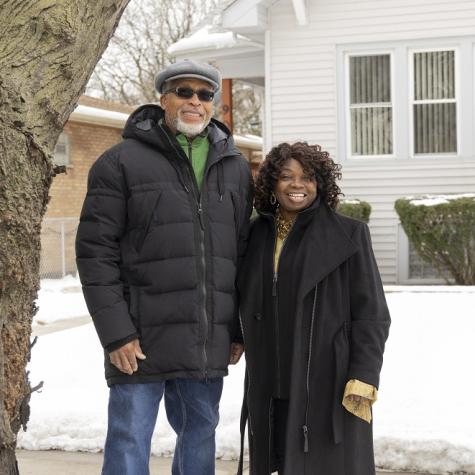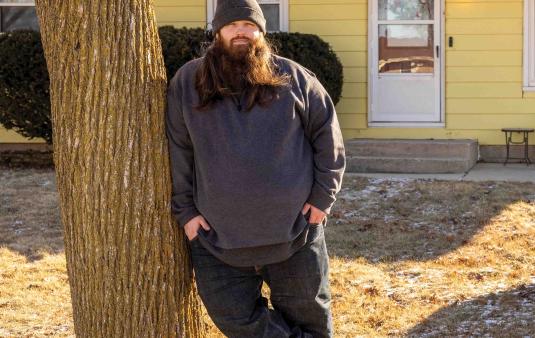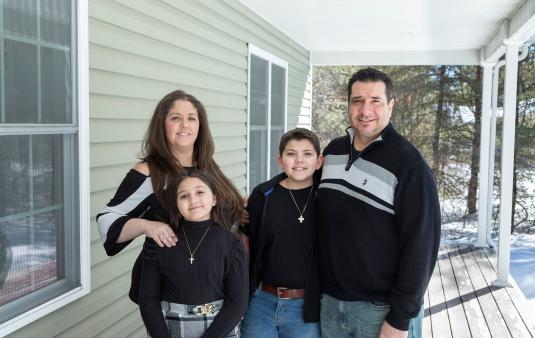How long does it take to foreclose on a home in Wisconsin?
Foreclosure is a complicated multistep process that allows mortgage lenders to repossess homes from homeowners who have missed payments on their mortgage loan. Wisconsin’s foreclosure process can take six to nine months or longer.
What is the best way to avoid foreclosure in Wisconsin?
The first step for any homeowner facing foreclosure or eviction should be to contact a HUD-approved housing counselor to better understand your options. Housing counselors are typically free and offered by a local nonprofit. BlueHub SUN may also be an option to prevent foreclosure and eviction. Find out if you qualify.
What are the steps of the foreclosure process in Wisconsin?
Understanding the steps involved in the foreclosure process can help homeowners better navigate this difficult situation. Below is a summary of the foreclosure and eviction processes in Wisconsin. However, it is important to remember that laws can change and how courts and agencies interpret and apply them can also change. Some rules can even vary within a state.
- Breach Letter:
- The lender is required to send a letter called a “breach letter” if the homeowner falls behind on their payments. The breach letter is a written notice of default - a notice that the homeowner has missed their payments - and a notice of the mortgage lender’s (or mortgage loan servicer’s) intent to foreclose on the property if the homeowner does not “cure the default,” which means catch up on their payments. After receiving the breach letter, the homeowner has a minimum of 45 days to catch up on payments and cure the default.
- Summons and Complaint:
- A foreclosure on a residential property follows a judicial process and is handled through the circuit court of the county where the property is located. If the homeowner fails to cure the default and is 120 days behind on their payment, the lender can initiate a foreclosure lawsuit in the county circuit court. The lender must give notice of the lawsuit to the homeowner by “serving” the homeowner with a Summons and Complaint (see #3). The complaint includes details about the mortgage, promissory note, property, default, amount due and defendant’s interest in the property.
- Service of Complaint:
- The homeowner is “served” with a copy of the foreclosure Summons and Complaint through personal service, meaning it will be delivered personally by the county sheriff’s department or a private process server. If personal service is not made after several attempts, a homeowner may be served through certified mail.
- Completing and Filing an Answer to the Complaint:
- Draft the Answer: An answer is the homeowner’s formal response to the allegations in the complaint. The homeowner should begin their answer by identifying themselves as the defendant and the lender as the plaintiff. The homeowner must respond to each allegation, admitting, denying, or stating that there is insufficient information to admit or deny. The answer can also include any applicable defenses or counterclaims, i.e., any allegations brought by the homeowner that the lender has committed some wrongdoing or legal violation related to the mortgage or the foreclosure process.
- File the Answer: The homeowner has 20 days from the date they were served the complaint to file their answer. The homeowner should make copies of the answer and must file the original document through mail or hand delivery with the circuit court where the foreclosure action was filed. There may be required filing fees, ranging from $75 to $150, but, if a homeowner cannot afford the fees, they can inquire about filing a fee waiver or request a payment plan if available.
- Serve the Answer: After filing the answer with the court, the homeowner must serve a copy of the answer on the lender’s attorney or the lender themselves (the Summons and Complaint for a foreclosure action should typically include the contact information of the law firm representing the lender). Service can typically be done by mail, fax or hand delivery. A homeowner should keep proof of delivering the answer for their records.
- Default Judgment:
- If the homeowner does not file an answer with the court, the lender can receive a “default judgment” from the judge. A default judgment is when the court automatically allows the lender to move ahead with the foreclosure sale since the homeowner has not provided any arguments against it.
- Foreclosure Mediation:
- Wisconsin has a mandatory foreclosure mediation program, which means that if the homeowner requests mediation, the lender must participate in the process. The Wisconsin Department of Justice and the Attorney General have established a Wisconsin Foreclosure Mediation Network, allowing homeowners to work with their lender through the assistance of a mediator. The Network is available in 31 counties. The homeowner must apply to enter the mediation program. The specifics of how and when to apply can vary by county. The homeowner can apply if they (1) received a foreclosure summons and (2) live in the property that is being foreclosed or own it as a rental property.
- Mediation Session: Once mediation is requested and scheduled, both parties (the homeowner and the lender) will meet with a neutral third-party mediator. The mediator facilitates communication and negotiation between the parties to explore possible alternatives to foreclosure, such as loan modifications, repayment plans or short sales
- Required Documentation: Before the mediation session, the homeowner is usually required to provide relevant financial documents and information to the lender to assess eligibility for potential foreclosure alternatives.
- Legal Representation: While not required, homeowners may benefit from having legal representation during the mediation process to protect their rights and interests.
- Possible Outcomes: During the mediation session, various outcomes are possible. If an agreement is reached between the homeowner and the lender, it will be put into writing and may help avoid foreclosure. If no agreement is reached, the foreclosure process may continue
- Cost: There may be costs associated with the mediation process, which could vary depending on the jurisdiction and specific circumstances.
- Summary Judgment:
- If mediation does not avoid foreclosure and the homeowner files an answer to contest the foreclosure, the lender can request a “summary judgment,” which means asking the court if the lender can continue with foreclosure without going to trial. A lender requests a summary judgment when they believe the homeowner’s answer does not raise any valid issues or defenses to the facts the lender presented.
- Reinstating the Mortgage:
- Before the foreclosure judgment (#9 below), the homeowner has the opportunity to pay the amount owed, including unpaid interest, fees, attorney costs and other costs related to the foreclosure. Full repayment of the amount owed would bring the loan current and reinstate the mortgage to the homeowner. If this happens, the court will automatically dismiss the foreclosure.
- Foreclosure Judgment:
- If no summary judgment is granted to the lender and the homeowner does not reinstate their mortgage, the lender’s foreclosure lawsuit will go to trial. If, during the trial, the court grants a foreclosure judgment in favor of the lender, the judge will order that the property be sold at a foreclosure sale.
- A homeowner is also allowed to attempt reinstatement after the foreclosure judgment, but in this case, it only delays the sale, meaning if another payment is missed, the foreclosure will proceed.
- Redemption Period:
- In Wisconsin, the homeowner can “redeem” the property between the time when the judge grants a foreclosure judgment and the actual foreclosure sale. This means that homeowner can essentially repurchase their property by paying the full amount plus interest and costs. The period between the foreclosure judgment and the foreclosure sale typically lasts between five weeks and a year, depending on the property, mortgage and if there is a “deficiency judgment” (see # 12).
- Foreclosure Sale:
- If the homeowner does not reinstate the property, a public auction is conducted. Notice of the sale must be published in a local newspaper for three consecutive weeks prior to the sale and posted in at least one public place in the city, village or town where the property is located (most commonly, the town hall). The sale is typically held at the county’s courthouse, and the property is sold to the highest bidder.
- Deficiency Judgment:
- A “deficiency” is the difference between the sale price at the foreclosure sale and the total amount the homeowner owes to the lender. If the amount that the property sells for is greater than the amounts owed against the property, there is no deficiency. However, if the amount the property sells for is less than the amount owed to the foreclosing lender, the lender can attempt to collect this amount from the homeowner after the foreclosure sale by filing a “deficiency action” lawsuit. During this lawsuit, the circuit court will determine the amount of the deficiency, if any, and the homeowner will have an opportunity to defend against the claim. The deficiency judgment is sought to recover the remaining balance on the mortgage loan after the foreclosure sale, and it is specific to the lender or lien holder who held the mortgage on the foreclosed property. Other lien holders or creditors who may have liens on the property but were not part of the foreclosure lawsuit typically cannot seek a deficiency judgment against the homeowner.
- Confirmation of Sale:
- A court hearing is scheduled to approve or “confirm” the foreclosure sale. This hearing allows the court to review the details of the sale, ensuring that it was conducted properly and that the bid amount is reasonable and fair. If there are any objections or challenges raised regarding the foreclosure sale or the bid amount, this could potentially lead to delays in the confirmation process. Once the court is satisfied with the details of the sale, a “confirmation order” is issued, confirming the sale as valid. The timing of the confirmation order can vary, but it is generally within a few weeks to a few months after the foreclosure sale. If the sale is confirmed, the circuit court judge will order the former homeowner to vacate the property. At this point the former homeowner should arrange a date of moveout with the lender.
- Writ of Assistance/Eviction:
- If the former homeowner refuses to vacate the property, the new owner can request the judge to grant a “Writ of Assistance” to gain possession of the property. This document, if granted, authorizes the county sheriff's office to assist in the eviction process. The writ of assistance gives the sheriff's office the legal authority to conduct the eviction, but it does not set a strict deadline for the eviction to be carried out. The actual timing of the eviction will depend on various factors, including the availability of the county sheriff's office to schedule and carry out the eviction, as well as other logistical considerations. The sheriff's office will schedule a specific date and time for the eviction, and this information will be communicated to the former homeowner in advance. In that sense, the former homeowner will be given a warning in the form of notice about the scheduled eviction date. However, it's essential to understand that this notice is not intended to provide an opportunity for negotiation or delay. The purpose of the notice is to inform the former homeowner of the scheduled date when the eviction will take place, and it is essential to comply with the eviction order and vacate the property on or before the specified date.
- Belongings:
- The sheriff’s office will bring movers to the eviction. They will declare certain items as junk; these items will be left on the curb for garbage collection. Other possessions will be moved into storage, and the former homeowner should receive a notice with information on where to retrieve their possessions.








